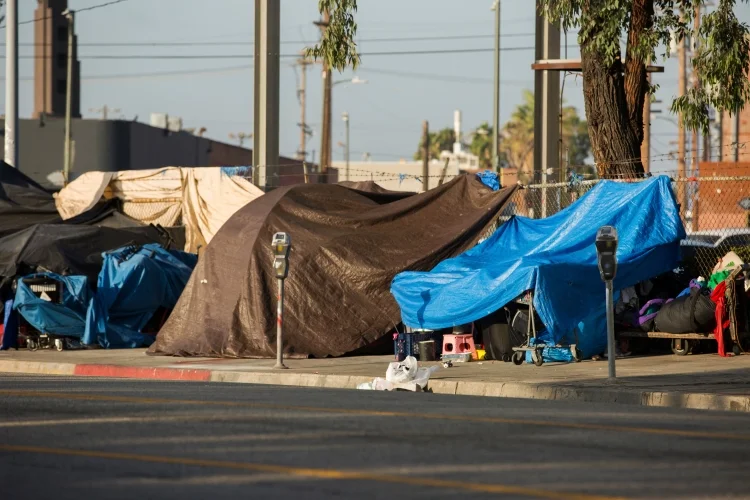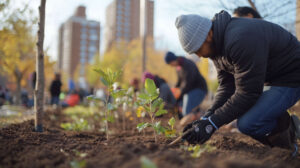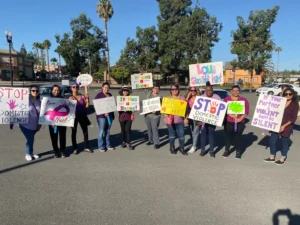California is known for great weather, beautiful scenery, and sun-struck beaches, but its reputation also has a darker side. California is consistently ranked among the top states with the highest number of people experiencing homelessness. Residents see it every day and tourists are often shocked by it; homelessness is a major problem in the Golden State.
Here’s an in-depth look at the state of homelessness in California, followed by an exploration of the causes and consequences of homelessness.
California Homelessness Statistics
An early 2022 estimated count of homelessness in California—the most recent since the start of the coronavirus pandemic—found that approximately 173,800 people are without stable housing in the state. The numbers show an increase since 2019, even with protective measures like eviction moratoria, rental assistance, and stimulus checks. Furthermore, trends indicate that Latino homelessness is growing disproportionately. In the county of Los Angeles, for example, the homeless Latino population increased by nearly 6,000 people since 2020.
Another notable trend in the data, however, reveals the progress that some homelessness initiatives are beginning to make. First, take a look at these statistics from 2019:
-
In California, 72% of people experiencing homelessness are unsheltered, which is the highest share of unsheltered homelessness of any state.
-
Nationwide, more than half of the people experiencing unsheltered homelessness reside in California.
But by 2022, new numbers show that more people experiencing homelessness are sheltered than ever before. While this is a step in the right direction, it’s also not a permanent solution. These people still need to be able to find permanent housing, something that’s increasingly difficult in California, particularly in regions with ballooning property costs like San Diego.
Homelessness in San Diego
The 2022 Point-in-Time Count for homelessness in San Diego found “no less than 8,427 individuals experiencing homelessness across San Diego County, a 10% increase from 2020.” Further troubling statistics highlight the many interconnected issues impacting homelessness. The 2022 Point-in-Time Count found that:
-
2022 saw an increase in families experiencing homelessness, up 56% from 2020
-
Black San Diegans, who make up under 5% of the total population in San Diego County, made up 24% of the region’s unsheltered homeless population
-
While 24% of San Diegans experiencing homelessness were over 55 in both 2020 and 2022, this year’s count showed 47% of those seniors were experiencing homelessness for the first time, with 57% having a physical disability.
“The Point-in-Time Count,” says Tamera Kohler, CEO of the San Diego Regional Task Force on Homelessness, “is about much more than numbers—it’s about people. Right now too many people are suffering in San Diego. They’re mothers and daughters, fathers and sons… The people our volunteers spoke to—from a senior with Alzheimer’s sleeping in a tent, to a family sheltering in their car, to people with a full time job but not enough income to pay rent—aren’t just numbers on a spreadsheet. They’re our neighbors, doing their best to survive.”
Here’s how our neighbors often fall into homelessness and the myriad ways in which they are affected.
Causes of Homelessness
There are many reasons for homelessness, but the number one issue contributing to homelessness in California continues to be a lack of affordable housing. When affordable housing is not available, people with high incomes start renting middle-income houses, while middle-income families and individuals need to rent low-income places. Low-income populations are then left without options.
“It’s sort of a game of musical chairs,” Nan Roman, president of the National Alliance to End Homelessness, told NPR. “And people who have a strike against them — because they have mental illness or a substance abuse disorder or a disability — are the least likely to get the chair.”
Other factors contributing to homelessness in California include:
-
Unemployment
-
Poverty
-
Low wages
-
Mental illness and the lack of needed services
-
Substance abuse and the lack of needed services
Consequences of Homelessness
Health Effects of Homelessness
Homelessness is, unsurprisingly, very detrimental to overall health. It not only exacerbates existing health issues, but creates new ones. People experiencing homelessness may face:
-
Increased stress levels
-
Exposure to communicable diseases, violence, and weather
-
Lack of access to needed medications
-
Difficulty in maintaining a healthy diet
-
Improper healing due to poor, unhygienic conditions
-
Behavioral health issues
Psychological Effects of Homelessness
Experiencing homelessness can also be a negatively impactful event on a psychological level. Mental health issues often develop during periods of homelessness, and can linger even after permanent housing is secured. People who have experienced homelessness may have lingering trauma that affects their mental, emotional, and behavioral health moving forward. Trauma can have cascading symptoms like concentration and memory problems, social withdrawal, psychological and physiological distress, intrusive thoughts, and more.
Because of the impacts homelessness has on individuals, families, and communities—and because of rising homelessness in California—we here at Crisis House recognize the importance of providing support to those lacking a stable home. Our homeless programs connect people with housing and resources in their time of need.
At Crisis House, we are here during these stressful times to support families with our services and resources. We provide crisis intervention, transitional and permanent housing, and services for families and children fleeing domestic violence. We’re leaders in critical services in East County, San Diego, administering programs for individuals and families experiencing domestic violence and homelessness.
See our impact and help us reach those in need by donating or volunteering today! You can also sign up for our newsletter to stay in the loop as we work to connect families, children, and individuals to crucial resources. Together, we can stop the cycle of domestic violence, child abuse, and homelessness and empower people to renew their lives!







